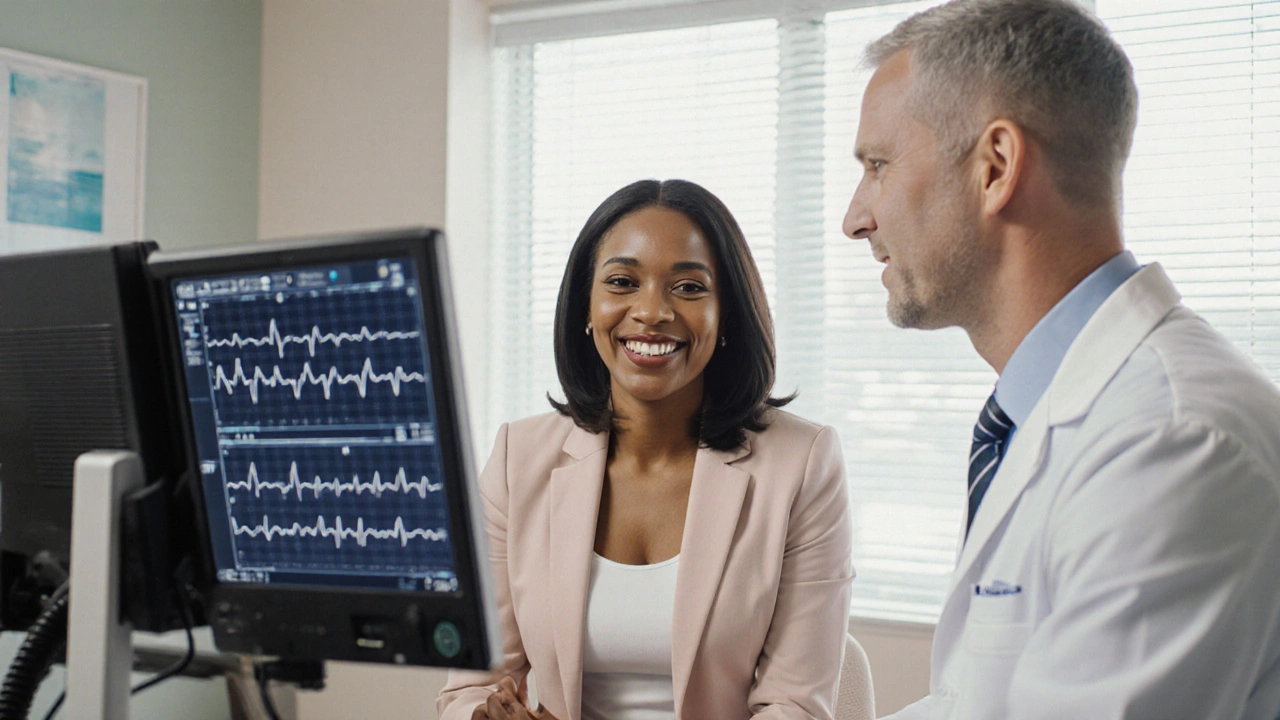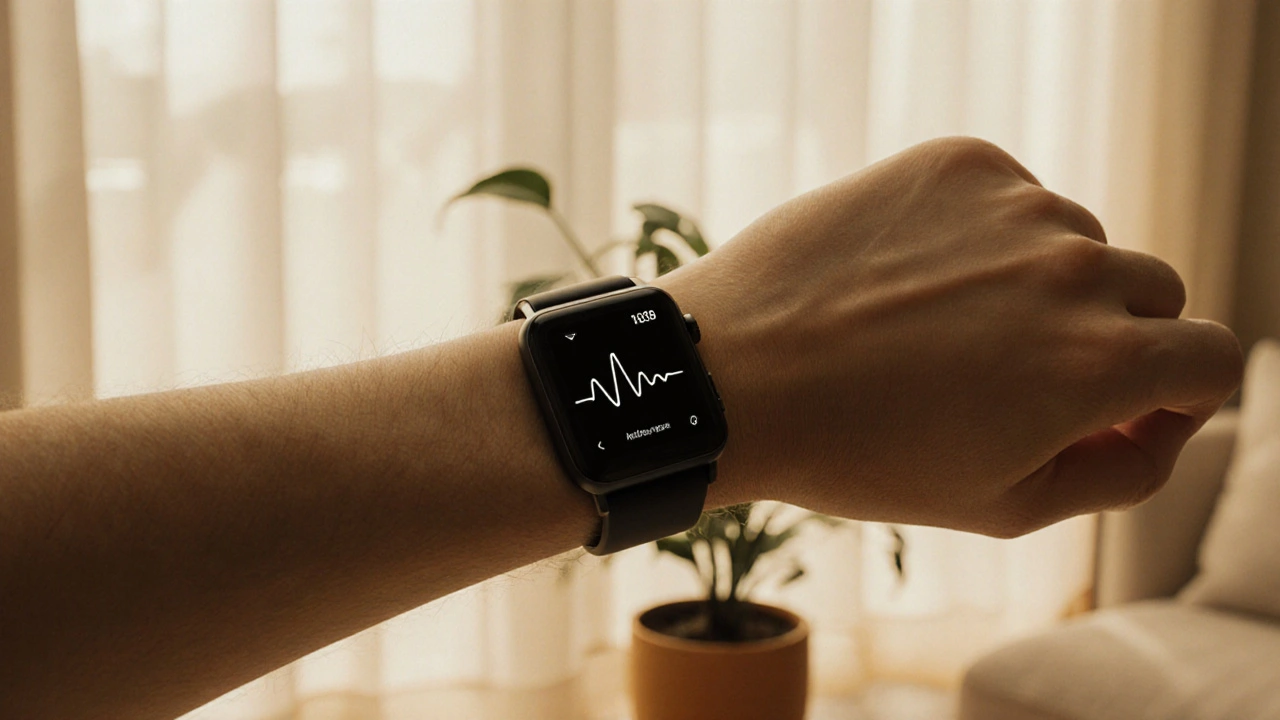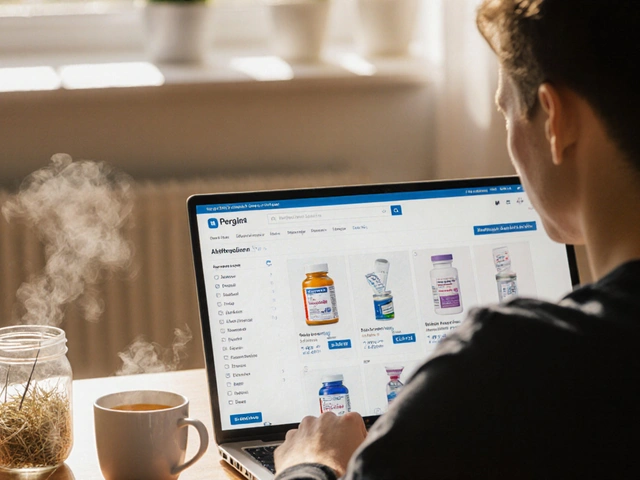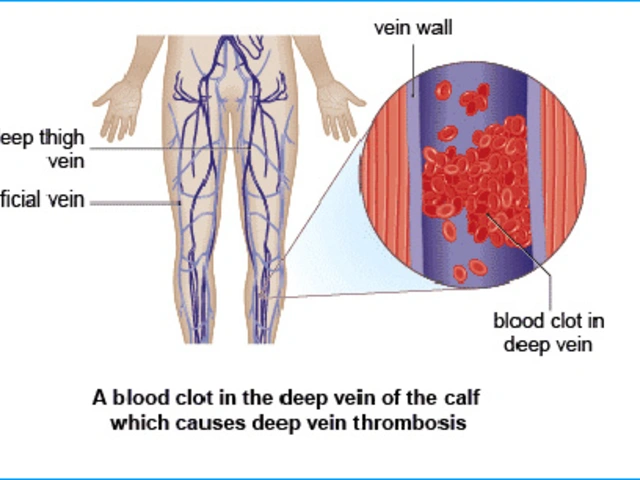
TL;DR
- Regular checkups catch rhythm changes before they become emergencies.
- Core tests - ECG, Holter, and lab work - should be scheduled at least twice a year for most patients.
- Consistent monitoring lets doctors fine‑tune meds, devices and lifestyle advice.
- Skipping visits raises the risk of stroke, heart failure, and sudden cardiac events.
- Prepare ahead: bring medication list, symptom diary, and ask about new technology.
Living with a Heart Rhythm Disorder means you’re constantly balancing medication, activity, and peace of mind. While the condition itself can be managed, the real safeguard lies in the routine appointments you keep with your heart team. Those visits aren’t just a formality - they’re a chance to spot subtle shifts that could lead to serious complications.
Today we’ll break down why those regular checkups are non‑negotiable, what you can expect during each visit, and how to get the most out of them. Whether you’ve been diagnosed last month or have lived with an arrhythmia for years, the guidance below will help you stay ahead of the curve.
What Exactly Is a Heart Rhythm Disorder?
A arrhythmia is any irregularity in the way the heart’s electrical system fires. The most common types include atrial fibrillation, ventricular tachycardia, and bradycardia. These disturbances can cause palpitations, fatigue, dizziness, or even fainting. While some arrhythmias are harmless, others increase the risk of stroke, heart failure, or sudden cardiac death.
Because the heart’s electrical pathways are dynamic, the severity and frequency of episodes can change over time. That fluidity is why a single test at diagnosis rarely tells the whole story.
Why Regular Checkups Are Crucial
Think of your heart’s rhythm as a weather pattern. One day it’s sunny, the next a sudden storm. Routine monitoring gives doctors the data they need to predict the next shift and intervene early.
- Early detection of worsening arrhythmia - Subtle changes in heart rate variability often precede a flare‑up.
- Medication safety - Drugs like Beta Blocker have narrow therapeutic windows; regular labs ensure you’re not over‑ or under‑dosed.
- Device management - For patients with a Pacemaker or ICD, checkups verify battery life and proper sensing thresholds.
- Risk reduction - Ongoing assessment of stroke risk (e.g., CHA₂DS₂‑VASc score) guides anticoagulant therapy.
- Lifestyle coaching - Your cardiologist can tailor exercise, diet, and alcohol intake based on real‑time data.
Skipping appointments removes these safety nets, leaving you vulnerable to preventable emergencies.
Core Checkup Tools and How They Work
Most heart rhythm follow‑ups revolve around a handful of proven tests. Below is a quick snapshot of each, why it matters, and what you’ll experience during the appointment.
| Checkup Type | Purpose | Typical Duration | Recommended Frequency |
|---|---|---|---|
| Electrocardiogram (ECG) | Snapshot of electrical activity at rest | 5‑10 minutes | Every 6‑12 months, or after symptom change |
| Holter Monitor | Continuous recording for 24‑48 hours | 2‑3 days of wearing a small device | Annually or when episodes are unpredictable |
| Event Recorder | Patient‑activated recording during symptoms | Worn for up to 30 days | When symptoms are infrequent but concerning |
| Cardiac Electrophysiology Study | Invasive mapping to locate arrhythmia sources | 1‑2 hours under sedation | Before ablation or when non‑invasive tests are inconclusive |
How Often Should You Schedule These Visits?
There’s no one‑size‑fits‑all calendar, but most specialists follow a tiered schedule based on risk and treatment.
- Low‑risk patients (stable atrial fibrillation on anticoagulation): Every 6‑12 months.
- Medium‑risk patients (symptomatic ventricular ectopy, recent medication change): Every 3‑6 months, with at least one Holter per year.
- High‑risk patients (post‑ablation, implanted devices, or heart failure): Every 1‑3 months, plus device interrogation as recommended by the manufacturer.
Ask your Cardiologist to tailor the timeline. The goal is to keep the interval short enough to catch trouble but spaced enough to avoid unnecessary appointments.

Preparing for Your Checkup - Tips That Make a Difference
- Medication list: Write down every pill, dose, and timing. Include over‑the‑counter supplements.
- Symptom diary: Note when you felt palpitations, dizziness, or chest discomfort, plus what you were doing.
- Wearable data: If you use a smartwatch that tracks heart rate, export the data and bring it along.
- Fasting instructions: Some labs (e.g., thyroid panel) require a fast; confirm ahead of time.
- Device readiness: If you have a pacemaker, ensure the battery status is known; many clinics can download it remotely.
Coming prepared shortens the appointment, lets the provider focus on interpretation, and often reveals patterns you might have missed.
Common Pitfalls and How to Avoid Them
Even diligent patients slip into habits that reduce the value of regular checkups.
| Pitfall | Impact | Solution |
|---|---|---|
| Skipping lab work | Missed drug toxicity or electrolyte imbalance | Schedule labs the day before your appointment; many labs offer curb‑side drop‑off. |
| Ignoring mild symptoms | Progression to severe arrhythmia | Log every episode, no matter how brief, and share the log. |
| Forgetting to update device settings | Inaccurate detection, unnecessary shocks | Set calendar reminders for device check‑ups per manufacturer guidance. |
When to Call Your Doctor Immediately
Regular visits are preventive, but some signs demand urgent attention.
- Sudden, severe chest pain or shortness of breath.
- New onset fainting or near‑fainting.
- Palpitations lasting more than 30 seconds accompanied by dizziness.
- Swelling in ankles or rapid weight gain (possible heart failure).
- Any device alarm notification (e.g., ICD shock).
If any of these appear, contact your cardiology clinic or emergency services right away.
Bottom Line: Make Checkups Part of Your Routine, Not an Option
Living with a heart rhythm disorder is a marathon, not a sprint. Regular checkups are the water stations that keep you hydrated, alert, and safe. By staying on schedule, you empower your heart team to adjust meds, fine‑tune devices, and give you actionable lifestyle advice. The payoff? Fewer emergency visits, better quality of life, and, most importantly, a heart that keeps beating on its own terms.
Frequently Asked Questions
How often should I get an ECG if I have atrial fibrillation?
For stable atrial fibrillation on consistent anticoagulation, an ECG at least once a year is typical. If you notice new symptoms or medication changes, schedule an additional ECG within a few weeks.
Can I use my smartwatch to replace a Holter monitor?
Smartwatches provide useful trend data, but they are not a clinical substitute. A Holter offers continuous, medical‑grade ECG leads and can capture arrhythmias that wearables may miss.
What risks are there if I skip my annual labs?
Missing labs can let drug toxicity, electrolyte shifts, or thyroid issues go unnoticed. These imbalances can trigger dangerous rhythm changes, especially with anti‑arrhythmic meds.
Is it safe to exercise if I have an arrhythmia?
Most patients can engage in moderate activity; the key is individualized guidance. Your cardiologist may suggest a stress test to define safe heart‑rate zones before you start a new routine.
When should I consider an electrophysiology study?
If non‑invasive monitoring (ECG, Holter, event recorder) fails to explain frequent symptoms or if a catheter ablation is being contemplated, an electrophysiology study becomes the next logical step.
Tom Druyts
Stay on top of those appointments, folks. The heart doesn't take a day off, so your check‑ups shouldn't either. A quick ECG every six months can catch a drift before you feel it. Keep a symptom diary on your phone – you'll thank yourself when the doc asks. Remember, consistency beats panic every time.
Julia C
It is unsettling how quickly healthcare systems push device data without explaining the firmware origins. While the article suggests routine Holters, one must consider that manufacturers embed undisclosed algorithms. My suspicion is that these tools could be feeding data to third‑party servers. The standard labs may be calibrated to mask subtle drug toxicity. Nevertheless, adhering to a schedule reduces the window for hidden manipulations. I urge patients to request raw ECG files for personal archiving. The lack of transparency fuels anxiety in the community. Until regulations tighten, vigilance remains essential.
John Blas
The drama around each checkup feels overblown, yet the data doesn't lie. Skipping a visit just invites the unknown. Keep the calendar busy.
Darin Borisov
In the context of electrophysiological stewardship, periodic surveillance constitutes a quintessential pillar of arrhythmic risk mitigation. Contemporary guidelines delineate a stratified cadence predicated upon phenotypic burden, therapeutic modality, and comorbid substrate. Low‑risk atrial fibrillation cohorts, stabilized on anticoagulation, merit semi‑annual electrocardiographic reassessment; escalation to quarterly intervals emerges when ventricular ectopy exceeds predefined thresholds. Holter‑derived heart‑rate variability indices serve as surrogates for autonomic tone, thereby prognosticating imminent tachyarrhythmic conversion. Device interrogation yields impedance, sensing amplitude, and battery longevity metrics that inform preemptive reprogramming cycles. Laboratory surveillance, encompassing serum electrolytes, renal function, and hepatic panels, furnishes the biochemical scaffold upon which anti‑arrhythmic pharmacokinetics are calibrated. Neglecting these multidimensional checkpoints cultivates a milieu conducive to iatrogenic pro‑arrhythmia. Moreover, iterative CHA₂DS₂‑VASc recalibration refines anticoagulation intensity, attenuating thromboembolic sequelae. Lifestyle coaching, albeit ancillary, synergizes with pharmacotherapy to modulate catecholaminergic surge precipitated by caffeine or alcohol excess. Institutional adherence to a protocolized follow‑up schema thereby attenuates stochastic variability inherent to arrhythmic phenotypes. The cumulative effect is a measurable decrement in emergent hospitalizations, as corroborated by longitudinal registry data. Consequently, clinicians are exhorted to embed these surveillance modalities within a patient‑centric care continuum, thereby operationalizing precision medicine in the realm of cardiac electrophysiology.
Sean Kemmis
Skipping labs is a bad idea.
Nathan Squire
Indeed, periodic biochemical profiling underpins therapeutic index optimization. Without serum electrolytes, beta‑blocker titration becomes a guesswork exercise. Moreover, renal function assays guard against digoxin accumulation. The nuanced interplay between lab metrics and electrocardiographic patterns cannot be overstated.
satish kumar
It is, without doubt, imperative, to administer, routine, cardiovascular assessments, particularly, in patients with arrhythmic predisposition; the literature, replete with meta‑analyses, underscores this necessity; nevertheless, many clinicians, inadvertently, forgo, comprehensive monitoring, thereby, exposing patients, to avoidable risk; therefore, a systematic, bi‑annual schedule, inclusive of ECG, Holter, and laboratory investigations, should be institutionalized; this approach, aligns with best‑practice guidelines, and optimizes clinical outcomes; finally, patient education, remains a cornerstone, of adherence, to such protocols.
Matthew Marshall
Your prose reads like a courtroom drama, yet the data is plain. I’ll stick with the simple schedule.
Mr. Zadé Moore
Device interrogation yields impedance, threshold, and battery longevity metrics. These parameters directly inform rechallenge algorithms. Neglecting them compromises therapeutic fidelity.
Brooke Bevins
That’s spot on – getting the device stats can feel like checking the fuel gauge before a road trip. 😊 It really helps the doc tweak settings before anything goes sideways. Keep the diary and the device read‑out together, and you’ll catch trends early. You’ve got this!
Vandita Shukla
Honestly, you don’t need to wait for the next appointment to bring up device parameters. Just email the tech support line, request the last interrogation report, and forward it to your physician. It’s more efficient than sitting in the waiting room.
Susan Hayes
Our great nation deserves the best cardiac care, and that means we don’t skip checkups. The heart is the engine of freedom, after all. Skipping labs or ECGs is like abandoning the front lines. Stay disciplined, stay patriotic, stay alive.
Michael Leaño
I hear you, and I want to add a little encouragement. Every appointment is a victory lap for your health, a chance to celebrate how far you’ve come. Bring a friend or family member for moral support – it makes the process feel less clinical. Remember that the medical team is on your side, and the data they collect fuels better decisions. Even if you feel fine, the silent changes can be caught early. Keep up the great work, you’re doing something amazing for yourself.
Anirban Banerjee
Dear colleague, it is our solemn duty to impart comprehensive guidance to those navigating arrhythmic disorders. I recommend that patients maintain an up‑to‑date medication ledger, complemented by a systematic symptom chronicle. Moreover, pre‑appointment laboratory requisitions should be scheduled to coincide with the clinical visit, thereby minimizing fragmentation of care. Should the patient possess an implanted device, a remote interrogation-if available-must be performed no later than one week prior to the encounter. Such meticulous preparation ensures that the consultation is both efficient and clinically productive.
Ernie Rogers
I see your points, but the tone could be more collaborative. Passive suggestions rarely inspire compliance. A gentle reminder often works better.
Eunice Suess
Honestly, the article missed the mark on clarity – too many run‑on sentences. Also, “lab work” should be “laboratory work”. And “heart rhythm disorder” deserves a capital H. Let’s aim for precision.
Anoop Choradia
While I appreciate the intent, a scholarly tone would elevate the discourse. The usage of “regular” could be refined to “periodic”. Additionally, citations to recent electrophysiology guidelines would substantiate the claims.
bhavani pitta
Allow me to assert that rigorous monitoring is not merely advisable; it is indispensable for safeguarding cardiac integrity. The procedural cadence outlined herein aligns with best‑practice standards, yet must be individualized. Dependence upon generic intervals alone may engender complacency. Therefore, clinicians ought to engage patients in shared decision‑making, tailoring frequency to clinical nuance. In sum, disciplined follow‑up is the cornerstone of arrhythmia management.






Write a comment